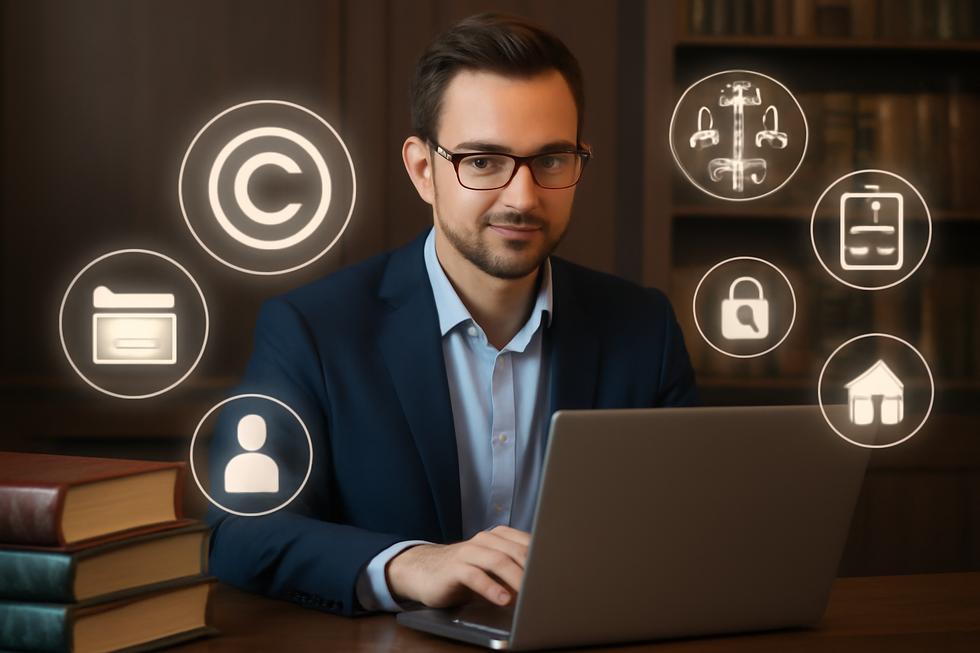Introduction
For business owners, understanding how to legally use copyrighted materials is essential for avoiding costly legal pitfalls and maximizing creative and commercial opportunities. Copyright law can seem complex, but several legal pathways allow businesses to use copyrighted content without infringing. These include the fair use doctrine, public licenses, specific library and archive exceptions, private user rights, and public domain content. This guide breaks down each approach, enabling business owners to navigate copyright confidently and make informed decisions that protect their ventures and foster innovation.
Tables of Contents
Chapter 1: Navigating Fair Use to Legally Utilize Copyrighted Works
- Decoding Fair Use: Practical and Legal Criteria for Responsible Copyright Use
- Balancing Public Interest and Creator Rights: The Broader Impact of Fair Use in Copyright Law
Chapter 2: Exploring How Public Licenses Facilitate Legal Use of Copyrighted Works
- Unlocking Creative Freedom: How Public Licenses Define Legal Use of Copyrighted Material
- Navigating Legal Compliance and Practical Steps for Using Copyrighted Content with Public Licenses
Chapter 3: Examining If Something Is Copyrighted How Can It Be Used via Library and Archive Exceptions
- Navigating Section 108: Legal Rights and Limitations for Libraries and Archives in Using Copyrighted Works
- Balancing Preservation and Access: Navigating Library and Archive Exceptions in Copyright Use
Chapter 4: Clarifying If Something Is Copyrighted How Can It Be Used in Relation to User’s Private Rights
- How Fair Use Empowers Private Use of Copyrighted Material Within Legal Boundaries
- Defining Legal Boundaries for User’s Private Rights Under Copyright Protection
Chapter 5: Determining If Something Is Copyrighted How Can It Be Used by Using Public Domain Works
- Decoding Copyright Status: Identifying and Using Public Domain Works with Confidence
- Leveraging Public Domain and Fair Use: Practical Guidance for Determining Copyright Status and Using Creative Works
Chapter 1: Navigating Fair Use to Legally Utilize Copyrighted Works
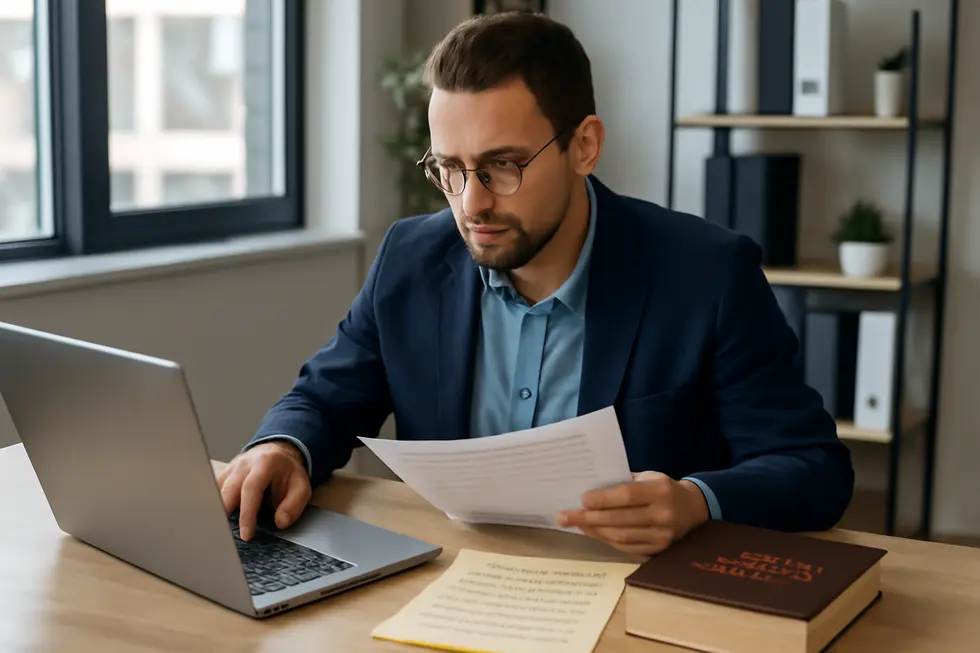
1. Decoding Fair Use: Practical and Legal Criteria for Responsible Copyright Use
Fair use stands as a vital balance that allows limited use of copyrighted material without formal permission, but only within defined legal boundaries. Central to applying fair use in practice are four intertwined factors, established under Section 107 of the Copyright Act, that guide users in assessing whether their use might qualify under this defense.
The first factor centers on the purpose and character of the use. Transformative uses—those that add new expression or meaning, such as parody, criticism, or educational commentary—are favored. A nonprofit or educational context strengthens the fair use argument, while purely commercial uses often weaken it. For example, quoting a passage for academic analysis typically leans toward fair use.
The second factor looks at the nature of the copyrighted work. Factual or published works receive more leniency, whereas highly creative or unpublished works enjoy stronger protection. Using excerpts from a news article is more likely to be fair use than copying a novel’s pivotal chapters.
Closely linked is the third factor—the amount and substantiality of the portion used. The less that is taken, particularly avoiding the “heart” of the work, the more a use aligns with fair use principles. Using only what is necessary to achieve the purpose often supports a fair use claim.
Finally, the fourth factor examines the effect on the market for the original work. If the new use diminishes the market value or acts as a substitute, it greatly diminishes the likelihood of fair use. Conversely, uses that do not compete with or harm the original’s commercial prospects stand a better chance.
No single factor is decisive; instead, courts weigh them collectively, ensuring a flexible but context-specific determination. This flexibility accommodates evolving uses, such as those involving digital technologies and AI, though it also introduces complexity and uncertainty. Users must thoughtfully evaluate their particular situation, considering these criteria carefully to avoid infringement.
For anyone seeking clarity on navigating these layered factors, resources like the detailed copyright information for business owners can provide practical guidance and case examples to better understand fair use’s application in daily scenarios.
2. Balancing Public Interest and Creator Rights: The Broader Impact of Fair Use in Copyright Law
The fair use doctrine serves as a crucial balance between protecting creators’ rights and fostering societal advancement. It enables limited, unlicensed use of copyrighted materials for purposes such as criticism, commentary, education, and news reporting—domains essential to free expression and cultural development. This balance hinges on evaluating four key factors: the purpose of use, the nature of the work, the amount used, and the potential market impact on the original.
Societally, fair use empowers educators, journalists, and artists to build upon existing works without stifling innovation. It encourages an informed public dialogue through commentary and scholarly discourse, which relies on access to copyrighted content. This dynamic supports a vibrant cultural ecosystem where creativity flows while respecting original contributions.
Economically, fair use plays a nuanced role. By allowing selective use without costly licensing, it lowers barriers for startups, researchers, and educators, driving competition and innovation. However, this flexibility must be carefully weighed against creators’ economic interests to prevent unfair loss of revenue. Courts continuously interpret fair use to maintain this equilibrium, ensuring creators benefit from their work’s market value while enabling legitimate, socially beneficial reuse.
In today’s technological landscape, fair use has become even more critical. Developments like artificial intelligence often incorporate copyrighted content to train algorithms that do not replace the original works but rather transform data into new applications. Recognizing such uses as fair supports technological progress without undermining copyright holders’ protections.
Yet, fair use is never absolute; it requires nuanced, context-specific analysis and carries ethical responsibilities such as proper attribution to avoid plagiarism. As societal norms and technologies evolve, the doctrine adapts, reminding us of the ongoing dialogue between public interest and intellectual property rights.
For those interested in a detailed exploration of copyright definitions and economic considerations, resources like the copyright definition economics business offer valuable insight.
Chapter 2: Exploring How Public Licenses Facilitate Legal Use of Copyrighted Works
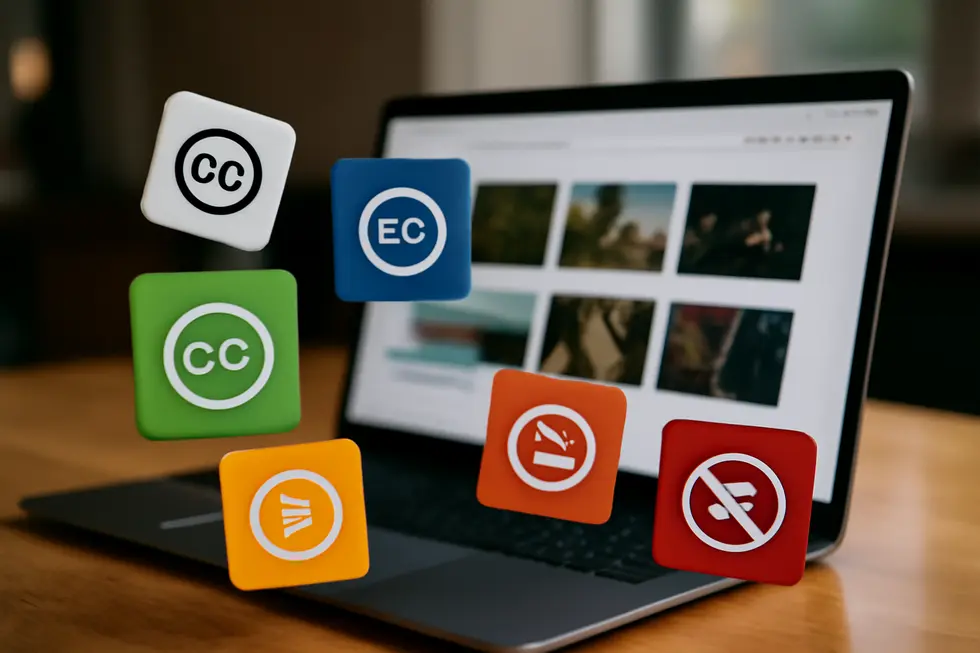
1. Unlocking Creative Freedom: How Public Licenses Define Legal Use of Copyrighted Material
Public licenses act as a bridge between copyright holders and the public, allowing lawful use of copyrighted works without the need to seek explicit permission. Unlike the traditional “all rights reserved” approach in copyright law, public licenses clearly delineate which rights the creator chooses to waive or retain, thus enabling broader sharing, modification, and use under predefined conditions.
Among the most widely recognized are Creative Commons licenses, which provide versatile frameworks tailored to varying levels of permission. These licenses use standardized terms and recognizable icons to indicate important attributes such as attribution requirements, prohibition on derivative works, non-commercial use limitations, or share-alike provisions. This clarity empowers users—whether educators, artists, researchers, or the general public—to confidently engage with the content while respecting the creator’s conditions.
Understanding whether a work is covered by a public license requires checking for explicit license statements or visual indicators. Once identified, it is crucial to carefully follow the license terms. For example, most licenses require that proper credit is given to the originator of the work. Other licenses may restrict commercial use or mandate that adaptations be shared under similar terms. Compliance with these rules means the user can employ the work without requesting additional authorization, reducing legal uncertainty and fostering a culture of open collaboration.
This system benefits creators by allowing them to maintain some control over their intellectual property while encouraging dissemination and creative reuse. At the same time, it benefits users by expanding access to resources that would otherwise remain restricted. Public licenses thus represent an essential component in the ecosystem of copyright usage, sitting between exclusive copyright enforcement and full public domain status.
For those seeking guidance on navigating public licenses and their practical implications, resources such as detailed copyright information for books can provide helpful insights. These tools help users understand how public licenses operate within broader copyright frameworks and support legally sound use of creative works without infringement.
2. Navigating Legal Compliance and Practical Steps for Using Copyrighted Content with Public Licenses
When considering how to use copyrighted works under public licenses, a clear understanding of practical guidelines is essential to ensure legal compliance. The first step is to accurately determine whether a work is copyrighted or freely available. Original creations are generally protected by copyright automatically, though some works may reside in the public domain or have been deliberately released under public licenses like Creative Commons. These licenses explicitly grant permissions under defined terms, allowing lawful reuse without separate negotiation.
Understanding the precise terms of a public license is crucial. Licenses differ in their requirements—some mandate attribution to the original creator, others prohibit commercial use or creation of derivative works. Strict adherence to these conditions safeguards against unintentional infringement. For example, if a work is licensed under Creative Commons Attribution (CC BY), you may use it freely but must always credit the source properly. Failure to comply invalidates the license’s protections.
Where intended use falls outside these licensed conditions or fair use considerations, obtaining explicit permission from the copyright holder remains necessary. Documenting licenses or permissions protects against legal disputes and demonstrates good faith in respecting intellectual property rights. To reduce risks, choosing well-vetted repositories of openly licensed content or royalty-free media is advisable, as these sources facilitate straightforward, compliant use.
Continuous education about copyright law, fair use nuances, and public licensing options empowers users to navigate complex legal landscapes confidently. Resources such as comprehensive copyright guides can assist in making informed decisions. By verifying copyright status, respecting license terms carefully, and seeking permissions when needed, creators and users can ethically and legally incorporate copyrighted works into their projects.
For an in-depth exploration of copyright principles and their application in business, the article on copyright law and public domain offers valuable insights that complement understanding public licenses and their legal use.
Chapter 3: Examining If Something Is Copyrighted How Can It Be Used via Library and Archive Exceptions
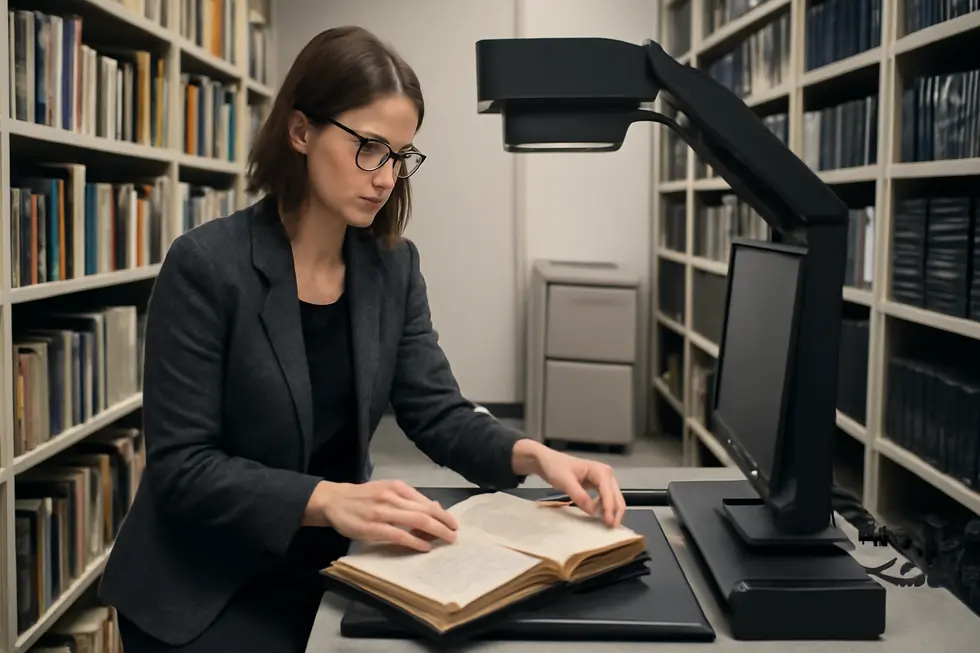
1. Navigating Section 108: Legal Rights and Limitations for Libraries and Archives in Using Copyrighted Works
Determining how copyrighted works can be used within libraries and archives requires careful adherence to the specific provisions outlined in Section 108 of the U.S. Copyright Act. This section grants libraries and archives certain limited rights to reproduce and distribute copyrighted materials without the copyright holder’s explicit permission, but only under precise conditions designed to balance access with copyright protection.
At the core of these exceptions is the premise that libraries and archives serve a public or research-oriented function. To qualify, the institution must either be open to the public or provide access specifically for scholarly research. Under Section 108, copying is permitted primarily for preservation purposes, including situations where the original work is damaged, deteriorating, lost, stolen, or if the format is becoming obsolete and no affordable replacement exists. This allows libraries to maintain their collections and continue offering access to valuable works.
While digital copies may be made for these purposes, Section 108 strictly prohibits distributing these copies beyond the institution’s physical premises. Additionally, the library or archive must already lawfully own the original work and must mark reproduced copies with an appropriate copyright notice. The use must be strictly noncommercial, ensuring that these exceptions do not undermine the market for the original work.
It is important to note that Section 108 does not allow staff or individuals within the institution to create copies for personal use; such scenarios are typically governed by the separate doctrine of fair use (Section 107). Furthermore, traditional library lending continues to be safeguarded under Section 109, which permits libraries to lend purchased lawfully acquired copies without infringing copyright.
Similar legal frameworks exist internationally, allowing libraries and archives to fulfill their preservation and access missions while respecting creators’ rights. Understanding these nuanced provisions helps clarify when and how copyrighted materials can be lawfully used within these institutions.
For those seeking deeper insights into these rules, guides detailing the interplay of copyright law and libraries, such as explanations of copyright information for books, offer valuable practical information.
2. Balancing Preservation and Access: Navigating Library and Archive Exceptions in Copyright Use
Balancing Preservation and Access: Navigating Library and Archive Exceptions in Copyright Use
Libraries and archives hold a unique position within copyright law, enabling them to safeguard cultural heritage and foster public access while respecting creators’ rights. These institutions are empowered to create limited preservation copies when original works deteriorate, vanish, or exist solely in obsolete formats—circumstances that threaten the longevity of valuable materials. However, the law carefully restricts these copies from being distributed beyond the institution’s physical space or made broadly accessible online, ensuring preservation efforts do not undermine copyright holders’ market interests. Access to these copies often occurs within library premises or secure intranets, free from commercial exploitation and accompanied by proper copyright notices.
Beyond preservation, libraries facilitate educational and scholarly engagement by providing access to copyrighted works under fair use principles or specific statutory exceptions. Use must remain proportionate; reproducing only what is essential and avoiding substitution of the original market product. To further respect copyright, libraries frequently negotiate licenses that grant broader digital access, showing a commitment to lawful use while maximizing public benefit.
Digitization projects aimed at cultural heritage preservation demonstrate the balance copyright law seeks to strike: promoting public engagement with historical and educational materials while protecting original authors’ rights. These efforts often include restoration and display, reinforcing the importance of these institutions as guardians of knowledge continuity. Moreover, libraries may invoke exemptions allowing circumvention of certain technological protections strictly for preservation or educational excerpts, always subject to regulatory review.
Nonetheless, limitations shape these exceptions robustly—libraries must possess lawfully acquired copies to invoke preservation rights and cannot substitute commercial transactions by making entire works freely available. Jurisdictional differences also require vigilant legal review to maintain compliance internationally.
This nuanced legal framework underscores the essential mission of libraries and archives: to preserve, provide access, and support learning, all while honoring the boundaries set by copyright protections. For further depth on related concepts, see copyright distribution rights in business.
Chapter 4: Clarifying If Something Is Copyrighted How Can It Be Used in Relation to User’s Private Rights
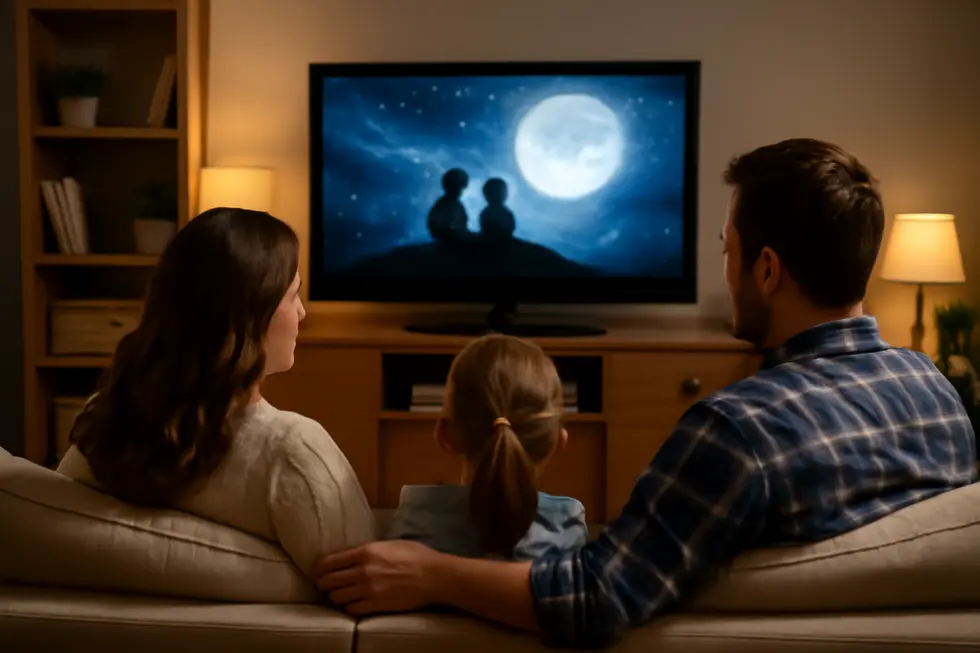
1. How Fair Use Empowers Private Use of Copyrighted Material Within Legal Boundaries
Fair use is a crucial legal principle that shapes how copyrighted materials can be used without explicit permission, especially in the context of a user’s private rights. This doctrine embodies a careful balance between protecting creators’ rights and allowing the public to benefit from limited access to copyrighted content in specific contexts such as education, criticism, or research. Unlike blanket permissions, fair use relies on a flexible, case-by-case evaluation guided by four key factors. These include the purpose and character of use—where nonprofit, educational, or transformative uses have a stronger chance of qualifying—alongside the nature of the original copyrighted work. For example, factual or published content is more likely to favor fair use than unpublished, highly creative works. Another factor assesses how much of the work is used; generally, using a small, non-central portion supports fair use claims. Lastly, the potential impact of the use on the market value of the original work is weighed carefully to avoid harm to the copyright owner’s interests.
When it comes to private rights, fair use enables individuals to engage in activities such as quoting, researching, or studying small parts of protected works without requiring a formal license. This means a user may, for instance, include brief excerpts of a book in personal academic work or comment on a copyrighted video within a private review. However, this permission is not absolute. Each use demands thoughtful consideration to ensure it aligns with the fair use criteria, as simply stating a use is “fair” does not guarantee legal protection.
Ultimately, fair use offers a vital framework that promotes intellectual freedom while respecting copyright law’s boundaries, facilitating lawful private use. For those seeking deeper insights into copyright and fair use, exploring resources like copyright information for books offers detailed guidance tailored to various media types.
2. Defining Legal Boundaries for User’s Private Rights Under Copyright Protection
Legal Boundaries Guiding Users’ Private Rights in Copyrighted Works
Copyright grants exclusive rights to creators, but it also defines clear limits that safeguard individuals’ private rights to use copyrighted material in certain ways. While copyright protection arises automatically once an original work is fixed in a tangible form, this does not mean every use requires prior authorization. Legal boundaries clarify permissible uses and prevent infringement.
Key exceptions protect user rights without permission. Foremost among these is the fair use doctrine, allowing limited use for purposes like criticism, teaching, and research. Fair use involves evaluating the purpose of use (educational or transformative uses weigh heavily), the nature of the work (factual content is more favorably treated), the quantity used (smaller portions are less risky), and the market impact on the original. For example, quoting brief passages in academic work or news coverage often fits within fair use.
Another important limitation is the first sale doctrine, which permits legal owners of a physical copy of a work—such as a book or DVD—to sell, lend, or give it away freely. This means privately sharing a legally obtained copy does not infringe copyright.
Certain statutory exemptions extend additional protections. Educational institutions can reproduce and display works for face-to-face or distance learning, and materials can be adapted for accessibility by people with disabilities without seeking permission. Compulsory licenses may ensure lawful use of works like music under regulated terms.
To lawfully exercise private rights, users must confirm a work’s copyright status and consider if their intended use fits these legal boundaries. Using excessive or central parts of a work, especially for commercial gain, risks infringement. Fair use remains complex, often requiring case-by-case legal analysis.
Careful attention to these boundaries allows individuals to respect copyrights while making appropriate use under their private rights. For more on copyright and public domain distinctions, see copyright law public domain.
Chapter 5: Determining If Something Is Copyrighted How Can It Be Used by Using Public Domain Works
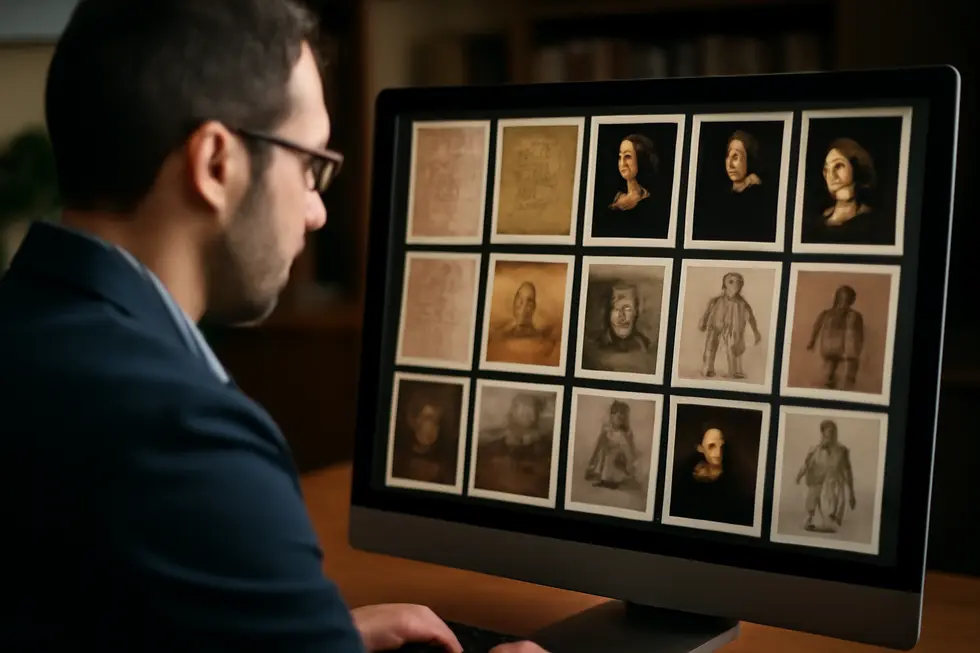
1. Decoding Copyright Status: Identifying and Using Public Domain Works with Confidence
Understanding whether a work is copyrighted or in the public domain is essential for lawful use. Copyright grants creators exclusive rights to reproduce, distribute, or adapt their works, limiting unauthorized use. However, once a work enters the public domain, it becomes free for anyone to use without permission or payment. Determining this status requires examining specific criteria, starting primarily with the copyright term. In the United States, works published before January 1, 1929, generally reside in the public domain because their copyrights have expired. The standard copyright duration typically extends to the author’s life plus 70 years, or, for corporate or anonymous works, up to 95 years from publication or 120 years from creation—whichever is shorter. When this term ends, copyrights expire at the close of the calendar year, allowing the work to enter the public domain on January 1 of the following year.
Besides expiration, some works never met copyright requirements due to missing formalities like registration or notice, especially those published long ago. Additionally, U.S. government works are exempt from copyright protection and are automatically public domain. To verify a work’s status, one can consult resources such as the U.S. Copyright Office records or databases like HathiTrust, which often indicate if a work is freely accessible. Physical copies may carry copyright notices on title pages or publication info sheets. For less visible works, contacting libraries, archives, or utilizing specialized copyright queries aids in clarifying protection.
Using public domain materials offers broad freedom: they can be copied, distributed, adapted, and incorporated into new projects without restrictions. However, it is important to note that new editions or derivative works may acquire their own copyrights, which do not limit the original public domain content. This understanding empowers creators to confidently use resources legally, encouraging innovation and access without infringing on intellectual property rights.
For detailed explanations on copyright durations and public domain definitions, exploring comprehensive guides such as the one on copyright and public domain can provide valuable, authoritative insight.
2. Leveraging Public Domain and Fair Use: Practical Guidance for Determining Copyright Status and Using Creative Works
Determining whether a work is copyrighted or free for use begins with understanding copyright duration and status. In the U.S., copyright protection generally lasts for the life of the creator plus 70 years for works created after 1978. Works published long ago may have expired copyrights and thus reside in the public domain—a status that grants free and unrestricted use without the need for permission or licensing. To verify this, one can consult reliable resources such as Cornell University’s copyright chart or the University of California, Berkeley copyright handbook, which help clarify if a particular work is no longer protected.
Public domain works offer extensive freedom: they can be copied, adapted, and incorporated into new creations without legal barriers. While not mandatory, crediting the original source is a best practice that promotes transparency. This freedom distinguishes public domain content from copyrighted works, which demand permission unless an exception applies.
When encountering copyrighted materials, the fair use doctrine provides a critical pathway for legal use without explicit authorization. Fair use considers four factors: the purpose and character of the use; the nature of the copyrighted work; the amount used; and the effect on the original work’s market. Uses that transform the original by adding new expression or meaning, especially for educational, commentary, or research purposes, lean favorably toward fair use. Likewise, factual published works and limited portions used increase the likelihood of fair use applicability. It’s essential to carefully evaluate these factors, as well as the overall market impact, to responsibly rely on fair use.
Practically, users should start by confirming the work’s copyright status, then analyze their intended use through the lens of fair use. Including a fair use rationale statement can help demonstrate good faith if rights are challenged. Educational and scholarly contexts often align more readily with fair use, though restrictions vary by situation.
This approach balances respect for creators’ rights with the public’s interest in accessing and building upon creative works. For deeper insights into these principles, detailed analysis is available through comprehensive resources such as those found in copyright law public domain guidance.
Final thoughts
Effectively using copyrighted materials legally can significantly benefit business growth, innovation, and brand development. By understanding the fair use doctrine, public licenses, library and archive exceptions, private rights, and public domain works, business owners can confidently incorporate external content without risking infringement. Careful consideration of each method ensures compliance and maximizes value from existing works, empowering businesses to thrive while respecting the legal frameworks that protect intellectual property.
Your IP is the foundation of your success – let’s protect it together before it’s too late. We can’t wait to help you turn your ideas into legally secured assets.
About us
undefined
